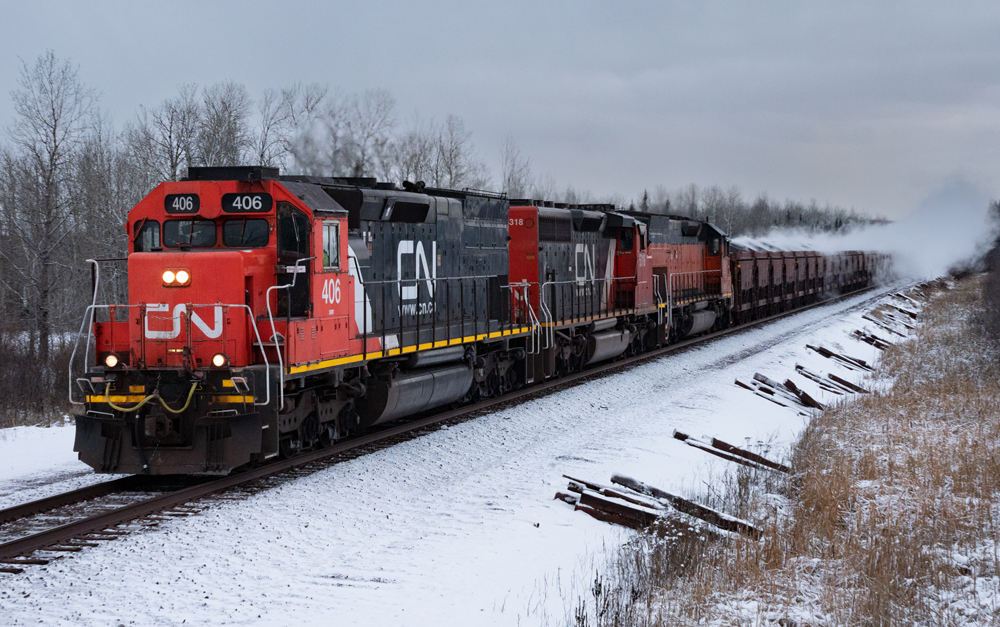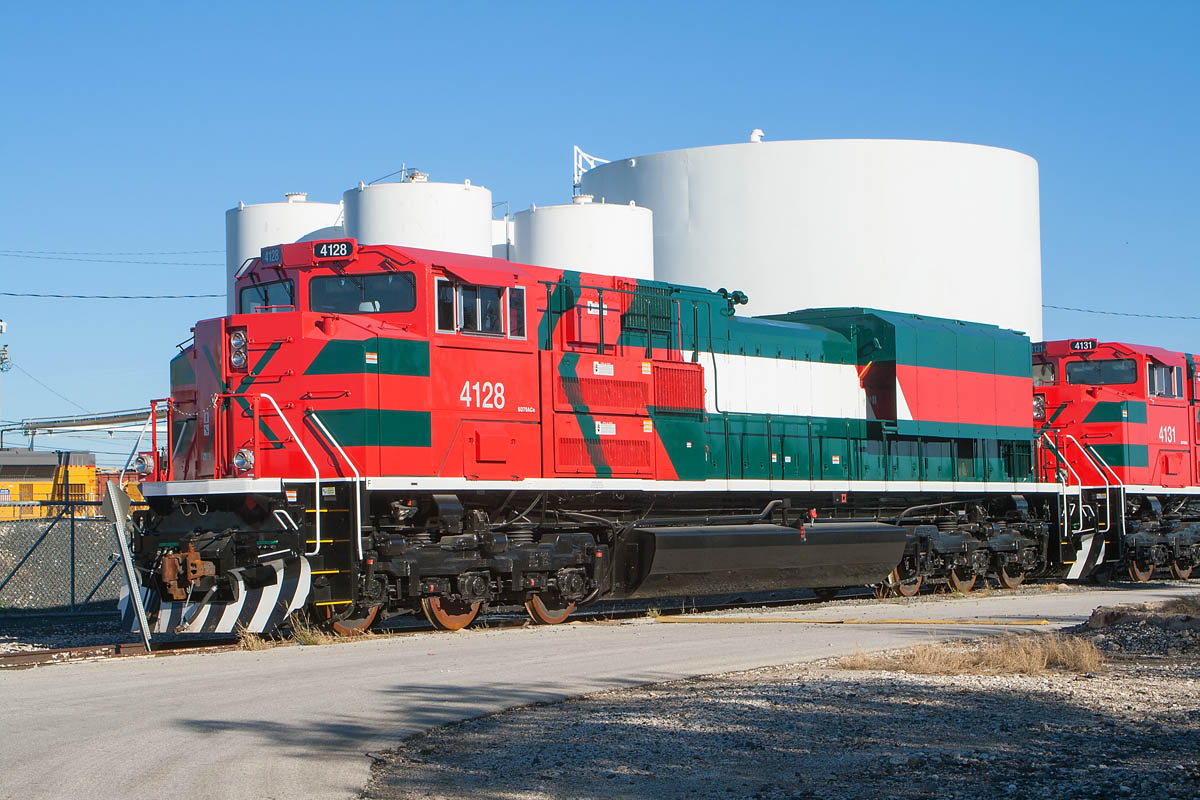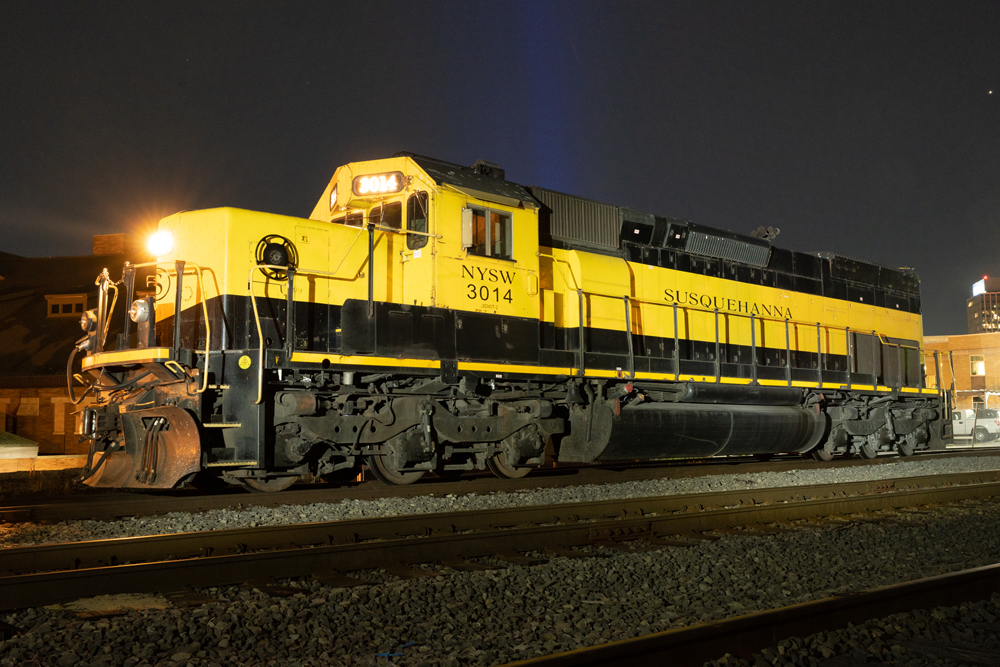Electro-Motive Division tunnel motor diesels

Electro-Motive Division tunnel motor diesels solved a tricky problem. Locomotives operate in all climates, from scorching desert heat to frigid Canadian winters. An ample supply of fresh air is always required for cooling and combustion purposes but when trains operate through long tunnels or snowsheds at slow speeds, the ability of a locomotive to receive large amounts of air cool enough to provide proper heat dissipation via the radiator system became an issue for several western railroads (most notably Southern Pacific and Rio Grande). Before the introduction of microprocessor technology, locomotives didn’t have the ability to self-govern and would quickly overheat and fail in these conditions.
The first tunnel motor diesel constructed by EMD was the SD45T-2, which was a modified version of the SD45-2. Since hot air rises, the modified locomotive has low-mounted air intakes along with larger radiators. The high-mounted radiators are cooled from below by upward-blowing fans.
Southern Pacific (together with SP subsidiary Cotton Belt) was the only railroad to purchase the SD45T-2, ordering 247 copies between 1972 and 1975. The tunnel motor variant of the highly successful SD40-2, the SD40T-2, gained slightly more orders at 312, split between Southern Pacific/Cotton Belt and Rio Grande orders that spanned from 1974 to 1980.
While no four-axle tunnel motors were ever ordered, EMD did design a tunnel motor version of the GP50 called the GP50T for Rio Grande. Unfortunately, an expected order for 12 GP50Ts was never finalized, and the design went unbuilt. The cold side radiator fan design with low-set side air inlets used on the SD40T-2 and SD45T-2s was applied to other EMD products in North America, the MP15AC, MP15T, GP15-1, GP15AC and GP15T. Many EMD products around the world already using cold side radiator fans received the new radiator design as well.
Eventually all tunnel motors built for Southern Pacific and Rio Grande ended up in the employ of Union Pacific in 1996. Most of the tunnel motors were purged from UP’s roster in the 2000s, ending up on dozens of other Class Is, short lines, regionals, and lease fleets across North America. Canadian National is the only Class I operating the tunnel motor design today. It inherited two separate fleets of SD45T-2s (rebuilt mechanically to SD40-3s) during its acquisition of Bessemer & Lake Erie and Duluth, Missabe & Iron Range in 2004. Its fleet of tunnel motors see service primarily on CNs iron ore operations in the upper Midwest. Unfortunately, CN’s fleet appears to be in danger, with rumored replacement power for the elderly locomotives arriving in 2023.
With over 500 tunnel motors constructed and many still operating in various forms, we will continue to see these unique locomotives plying the rails of short lines and industrial sites across the continent long after Canadian National has retired their fleet. [A version of this story originally appeared in the March 2016 issue of Trains Magazine.]
Known operators of tunnel motors in 2022 (excluding privately operated units at industrial sites):
- Arkansas-Oklahoma Railroad
- Canadian National Railway
- Chicago, Ft. Wayne & Eastern Railroad
- Kyle Railroad
- Lancaster & Chester Railroad
- Missouri & Northern Arkansas Railroad
- New England Central Railroad
- New York, Susquehanna & Western Railway
- Northern Plains Railroad
- Ringneck & Western Railroad
- RJ Corman Railroad
- Wheeling & Lake Erie Railway















